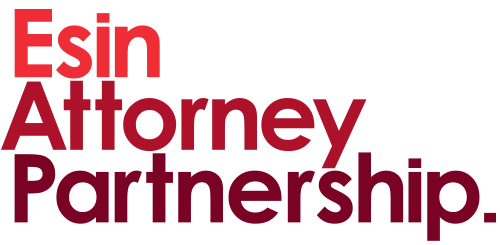New Development
The Competition Authority (“Authority“) published the Draft Regulation on the Settlement Procedure for Investigations on Anticompetitive Agreements, Concerted Practices, Decisions and Abuse of Dominant Position (“Draft Regulation“) on its website on March 18, 2021. The Draft Regulation aims to save time and resources in investigations by concluding the investigation process rapidly and conclusively, and to establish the settlement procedure introduced by the Law No. 7246 Amending the Law No. 4054 on the Protection of Competition (“Law No. 4054“), which entered into force on June 24, 2020. Opinions, suggestions and evaluations on the Draft Communiqué may be submitted to the Competition Authority until April 19, 2021.
What Do the Developments Mean?
The Draft Regulation is another effort of the Authority to harmonize the Turkish competition law regime with the EU. The Draft Regulation aims to regulate the procedures and principles for the settlement mechanism applicable for the undertakings or associations of undertakings investigated for their conduct under Articles 4 and 6 of the Law No. 4054, which prohibit restrictive agreements and abuse of dominance, respectively. The Draft Regulation implements the following procedures and principles:
- Applicable for any kind of anticompetitive conduct: Unlike the de minimis exception and the commitment mechanism, which were also newly introduced by the Law No. 7246 Amending the Law No. 4054 and further regulated through communiqués published recently, the settlement mechanism would be applicable for any type of violation falling under Articles 4 and 6 of the Law No. 4054 and would not exclude clear and hardcore violations.
- The time limitation for settlement: In line with Article 43 of the Law No. 4054, the Draft Regulation provides that the Competition Board (“Board“) could settle with the investigated parties, who accept the existence and scope of the violation, until the official service of the investigation report.
- Procedure for the initiation of the settlement process: The settlement procedure can commence after the initiation of an investigation based upon the investigated parties’ written request or ex officio by the Board. In case the investigated parties request a settlement, the Board may accept or reject the request, or may decide to invite the other investigated parties (if any) for settlement discussions. If the Board commences the settlement process ex officio, the investigated parties should submit their intention to commence the settlement discussions within the time period designated and any submissions after this period would not be taken into consideration.
In terms of the initiation of the process, the Board will consider the procedural benefits derived from concluding the investigation process rapidly and any differences of opinions of the investigated parties and the Board itself on the existence and scope of the violation. The Board may also take into account (i) the number of the investigated parties; (ii) whether a significant number of investigated parties apply for settlement; (iii) the scope of the violation and nature of the evidence; and (iv) the possibility of reaching a common understanding on the existence and scope of the violation with the investigated parties.
- Settlement discussions with the Authority: The Draft Regulation indicates that once the investigated parties’ request for settlement is accepted or they duly accept the Board’s invitation, the settlement discussions will start as soon as possible. Article 6/2 of the Draft Regulation underlines that a party would not be deemed to accept the allegations because it participates in settlement discussions, and the parties may rescind their acceptance before the submission of the settlement letter. As per Article 6/5 of the Draft Regulation, during these discussions, the Authority will enable the parties to obtain information on: (i) the content of the allegations against the relevant party; (ii) the nature, scope and duration of the alleged violation; (iii) the primary evidence used to determine the alleged violation; (iv) potential reduction rates; and (v) the range of potential administrative fines.
- Interim decision on the settlement: As settlement discussions come to an end, the Board issues an interim decision on the settlement process, which lays out the basis of the settlement letter. The interim decision will mainly include the (i) nature, scope and duration of the violation; (ii) minimum and maximum administrative monetary fine rate calculated pursuant to Regulation on Fines to Apply in Cases of Agreements, Concerted Practices and Decisions Limiting Competition, and Abuse of Dominant Position (“Regulation on Fines“); (iii) reduction rate as a result of the settlement procedure; (iv) minimum and maximum reduction rate pursuant to Regulation on Active Cooperation for Detecting Cartels (“Leniency Regulation“), if applicable; and (v) time period for the submission of the settlement letter to the Authority. Should the parties agree with this interim decision, they must submit their settlement letter within the Board’s determined time period, which should not exceed 15 days. Otherwise, the interim decision will not be binding for the Board.
- Settlement letter: If the parties accept the content of the interim decision, they will submit their settlement letter to the Authority, which should include the parties’ explicit declaration of acceptance on (i) the existence, scope, duration, results of the violation and its responsibility arising from the violation; (ii) the maximum rate and amount of fine which may be imposed by the Board; (iii) them being sufficiently informed about the allegations and allowed to provide their opinions and explanations; and (iv) not challenging the administrative monetary fine and content of the settlement letter. Once the settlement letter is duly submitted to the Authority, it cannot be withdrawn.
- Settlement decision: Within 15 days upon the submission of the settlement letter before the Authority, the Board terminates the investigation against the relevant party with a final decision finding a violation and including the fines.
- To Settle or Not to Settle?: Similar to the commitment procedure, the settlement procedure also seems to be a strategic decision for undertakings in terms of saving costs and time. One would have to weigh the potential advantages and disadvantages when deciding to settle.
- Reduced Fines: The Draft Regulation envisages up to a 25% reduction in fines.
- Best of Both Worlds – Leniency and Settlement: A settlement procedure does not prejudice a party’s benefits under a leniency application. Pursuant to Article 7/3 of the Draft Regulation, a party could still benefit from reductions awarded under these two different procedures, i.e., the reduction of the fine granted to the parties for settlement will be added to their leniency reward.
- Judicial Review Restriction: As also stipulated under Article 43 of the Law No. 4054, the Draft Regulation deprives settling parties from appealing the administrative monetary fine and content of the settlement letter.
- Confidentiality Obligation: As per Article 12 of the Draft Regulation, settling parties should keep the content of the settlement discussions and information and documents they obtained during the settlements discussions confidential until the final decision. If the Board identifies the violation of this obligation, it has the authority to launch another investigation and will consider it as an aggregating factor for the determination of the administrative monetary fine.
- Application of the Draft Regulation to Ongoing Investigations: The Draft Regulation provides that the regulation provisions can also be applied to ongoing full-fledged investigations where investigation reports are yet to be served once the Draft Regulation enters into force.
Conclusion
The Draft Regulation is an important step in catching up with a decade of the EU’s settlement enforcement and open to comments, recommendations and evaluations from the public. Opinions on the newly published Draft Regulation may be submitted to the Authority until April 19, 2021. It is expected that the Draft Regulation and the eventual regulation to come into force will bring compelling gains to both the investigated parties and the Authority in terms of reduced fine amounts and saving time and resources arising from the full-fledged investigation processes.
Please stay up to date with further developments through the Esin Attorney Partnership Coronavirus Helpdesk.




